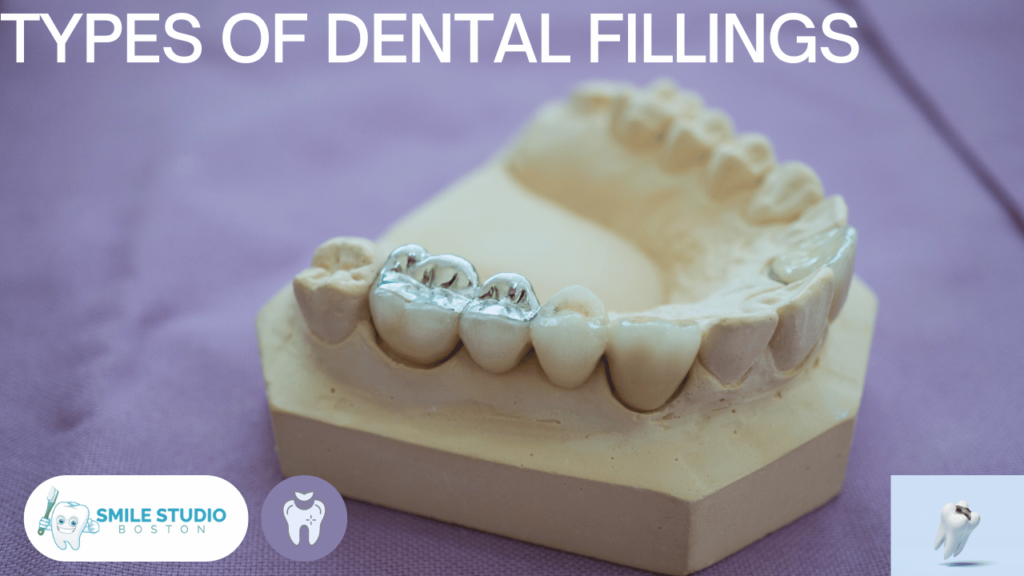When it comes to dental health, selecting the appropriate dental filling is crucial. Various types of dental fillings are available, each catering to different needs and preferences. Understanding “What Are the Different Types of Dental Fillings?” is key to maintaining oral health and ensuring the longevity of dental work. Dental practices with expertise in this field offer personalized care, aiding patients in making informed decisions about their dental fillings, whether for cosmetic appeal or durability. The use of advanced technology and materials in these practices ensures the best possible care and results for each patient.
What Are Dental Fillings
In restorative dentistry, understanding “What Are the Different Types of Dental Fillings?” is vital. Dental fillings are designed to repair teeth damaged by decay or fractures. The primary purpose of a dental filling is to restore the tooth to its normal function and shape and to prevent further decay by closing off any spaces where bacteria can enter. Educating patients about the different types of dental fillings is key.
Options include gold, amalgam, composite resin, and porcelain. Each material has unique properties: gold is highly durable, amalgam is strong and less expensive, composite matches the natural tooth color, and porcelain offers both strength and aesthetics. The choice of filling material can depend on various factors, including the extent of the decay, the tooth’s location, the patient’s allergies, and aesthetic preferences. Understanding the different options is crucial for maintaining optimal dental health.
Types of Dental Fillings
In exploring “What are the different types of dental fillings” we find various options:
- Gold Fillings: Gold fillings, a choice in “What Are the Different Types of Dental Fillings,” are known for their durability and biocompatibility. These fillings can last for decades, making them an excellent long-term investment for dental health. Gold is well-tolerated by gum tissues and is a strong material suitable for fillings that need to withstand significant chewing forces. However, the noticeable gold color and higher cost compared to other filling materials are factors to consider when choosing this option.
- Amalgam Fillings: Amalgam fillings are known for their durability and cost-effectiveness. Made from a mixture of metals, including silver, amalgam fillings are strong, making them ideal for filling cavities in back teeth where chewing forces are greatest. However, their silver color makes them more visible than other types of fillings, which might be a consideration for fillings in more visible areas of the mouth.
- Composite Resin Fillings: Composite resin fillings, a key component in “What Are the Different Types of Dental Fillings,” are favored for their ability to blend with the natural color of teeth. They are made from a mixture of plastic and fine glass particles, offering a more aesthetic alternative to visible teeth. However, while they provide a more natural appearance, they may not be as durable as metal fillings and could require more frequent replacements over time.
- Porcelain Fillings: Porcelain fillings offer both aesthetic appeal and durability. These fillings are known for their ability to match the natural color of teeth and resist staining, making them a popular choice for visible areas. Porcelain is a strong material that holds up well to the wear and tear of chewing, providing a balance of beauty and functionality. While they are about the same price as gold fillings, their natural appearance and longevity make them a desirable option for many.
For more in-depth information on each type of filling, please refer to Smile Studio Boston’s page on dental fillings here.
Factors to Consider in Choosing a Filling
When considering “What are the different types of dental fillings,” it’s important to think about factors like tooth location, durability, aesthetics, and cost. The location of the tooth affects the choice of filling material; back teeth may require stronger, more durable materials like gold or amalgam, while more visible front teeth might benefit from tooth-colored materials like composite or porcelain. The longevity and maintenance of the filling material are also crucial, as is the cost, which can vary significantly between different types of fillings.
The Procedure for Getting a Filling
The procedure for getting a dental filling involves several steps. First, the dentist diagnoses the extent of tooth decay. Next, the decayed material is carefully removed from the tooth, and the cavity is thoroughly cleaned. After cleaning, the cavity is filled with the chosen material, such as gold, amalgam, composite, or porcelain, based on factors like tooth location, patient preference, and needed durability. The process emphasizes patient comfort and clear communication, ensuring patients understand each step and receive care tailored to their needs.
Maintenance of Dental Fillings
Maintaining dental fillings, especially considering the variety of “What Are the Different Types of Dental Fillings,” involves a few comprehensive steps:
- Oral Hygiene: Brush twice a day with fluoride toothpaste and floss daily. This prevents decay around the fillings and prolongs their life.
- Regular Dental Check-ups: Have your dentist check your fillings during regular visits. They can spot early signs of wear or issues and provide timely care.
- Mindful Eating: Avoid hard, sticky, or overly crunchy foods that can crack or loosen fillings. Chewing ice or hard candy should be avoided.
- Avoid Using Teeth as Tools: Don’t use your teeth to open packages or bottles, as this can damage fillings.
- Be Aware of Bruxism: If you grind your teeth, consider a mouth guard to protect your fillings from excessive wear.
- Prompt Dental Care: If a filling becomes loose, cracks, or falls out, see a dentist as soon as possible for repair or replacement.
- Avoid or Limit Staining Substances: For composite or porcelain fillings, limit coffee, tea, or tobacco use to avoid staining.
- Fluoride Treatments: Consider fluoride treatments or mouthwashes to strengthen the enamel around fillings.
By following these steps, you can ensure the longevity and effectiveness of your dental fillings, no matter the type.
Conclusion
In summarizing “What Are the Different Types of Dental Fillings? and the importance of choosing the right type of dental filling, it’s crucial to consult with a dental professional for personalized advice. Each type of filling, from gold to porcelain, offers distinct benefits and considerations, and a dentist can guide you in selecting the most suitable option based on your specific dental needs and preferences. Regular dental check-ups and maintenance are also key to ensuring the longevity of your fillings and overall oral health.
Call to Action
For expert advice on “What Are the Different Types of Dental Fillings?” and to address your specific dental needs, don’t hesitate to contact Smile Studio Boston. Their team of professionals is ready to assist you with personalized care. To schedule an appointment, visit their appointment page here. For any queries or additional information, feel free to reach out to them directly through their contact page here.
FAQ’s
- What are the types of dental fillings?
Gold, amalgam, composite resin, and porcelain.
- What is the best option for fillings?
It depends on individual needs, tooth location, and aesthetic preferences.
- Can you choose what type of filling you get?
Yes, usually patients can choose, but dentist advice is important.
- What is the most popular tooth filling?
Composite resin, due to its natural appearance.
- What is the most natural-looking tooth filling?
Composite resin and porcelain, as they closely match natural tooth color.
- Which filling lasts the longest?
Gold fillings are known for their durability and longevity.


